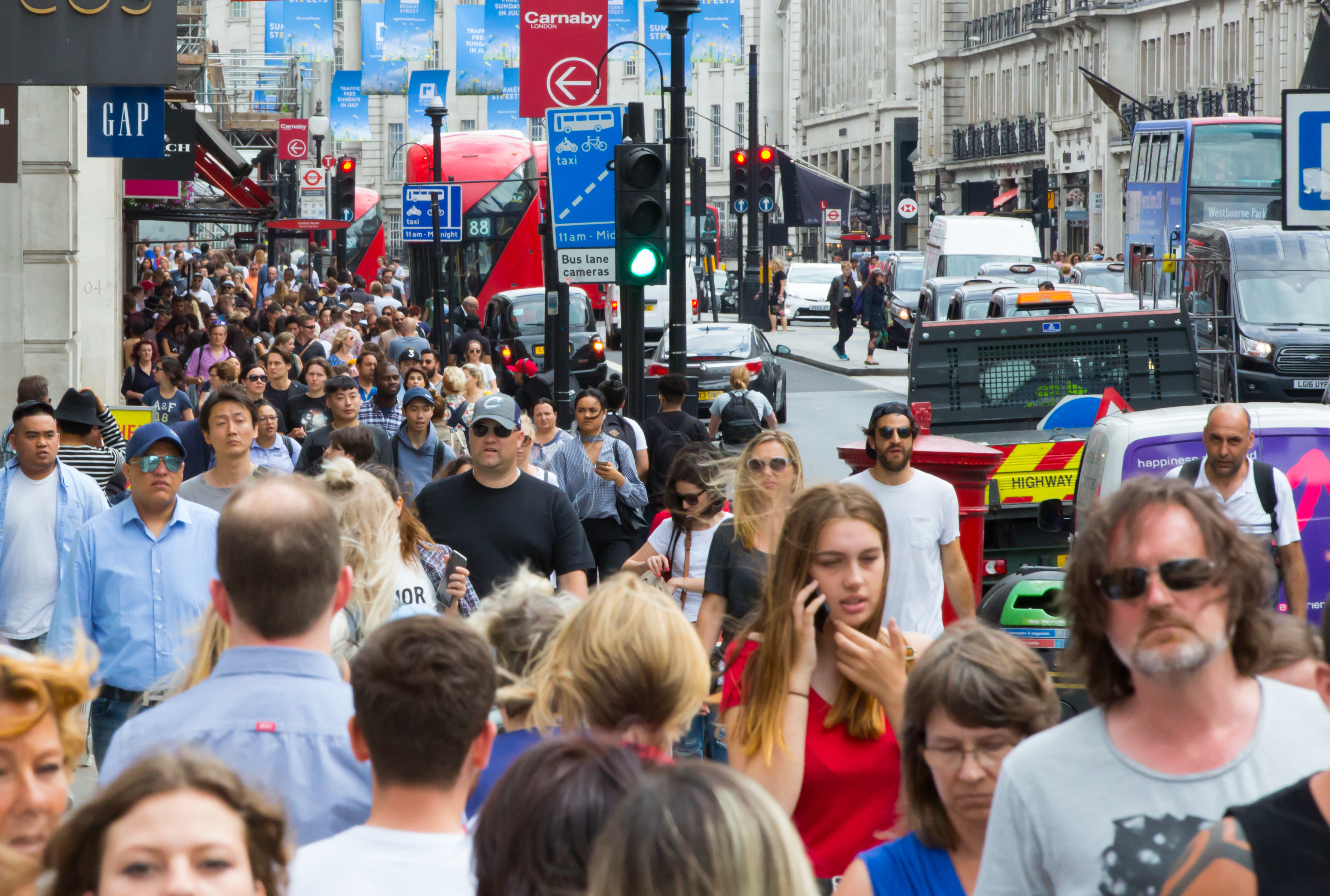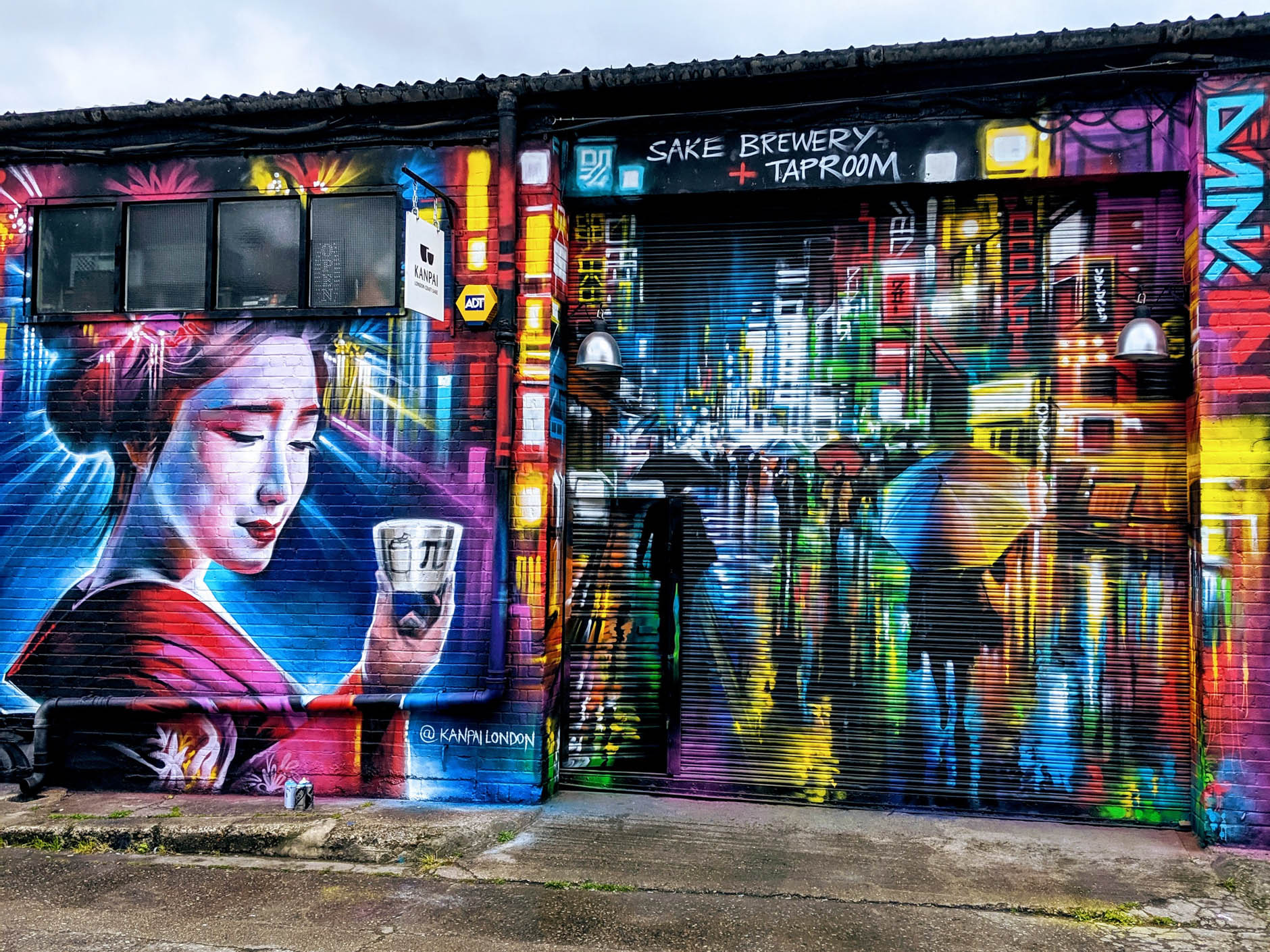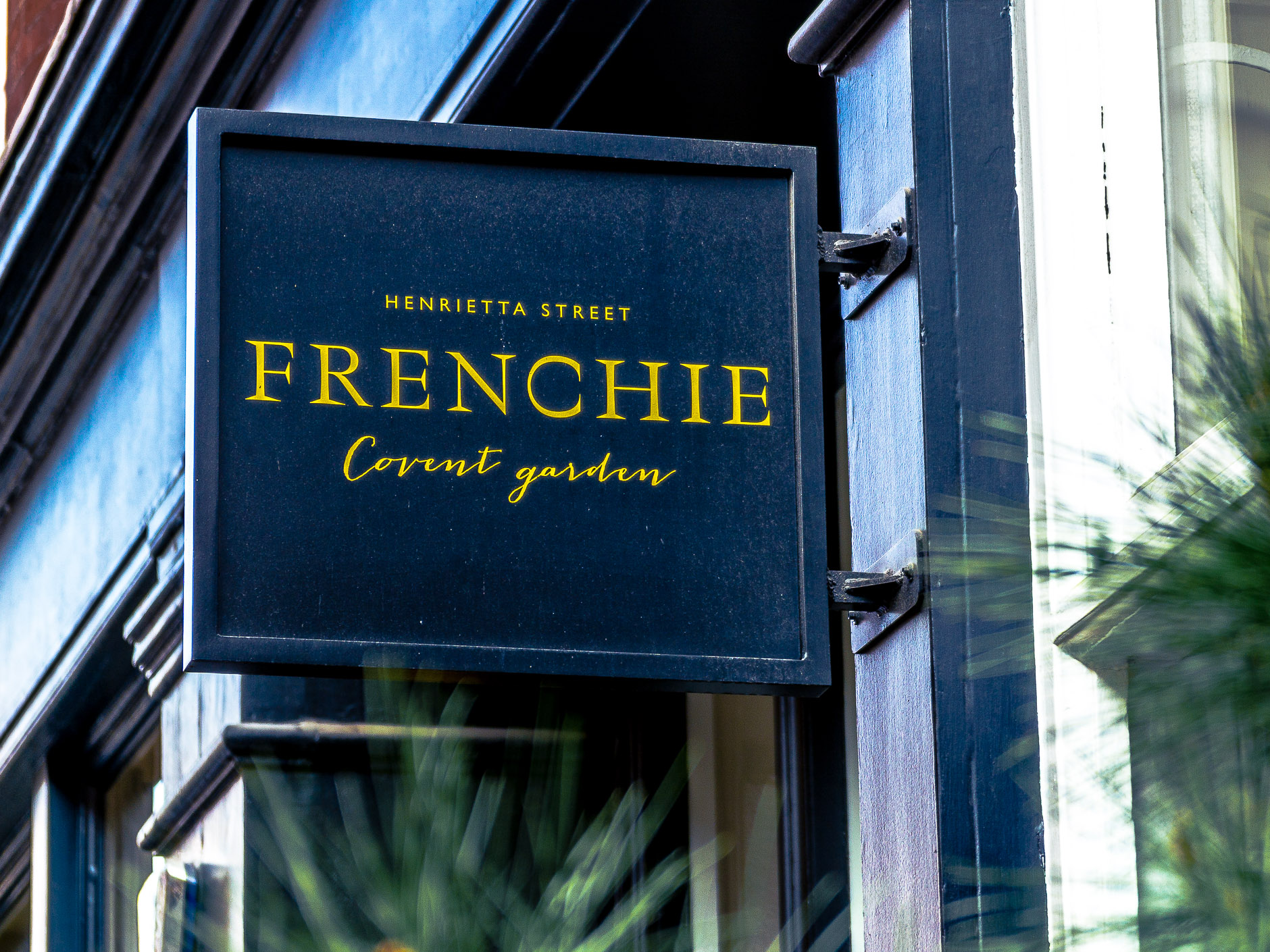Unless you think the great British high street deserves to fail (you do, don’t you? A bit?) then much needs to be done to save our town centres from extinction.
Look at the past year: a succession of closures and shrinkages, touching industries such as clothing, kids’ toys, groceries, AV equipment and – crucially – dining. I think we all felt surprise when Saint Jamie became forced to wind up Barbecoa and pare back his Italian chain. Carluccio’s followed suit in the same fortnight that M&S announced the planned closure of 100 stores.
There is no escaping that the internet – in particular, Amazon, has robbed high street shops of untold custom
What’s going so wrong? Let’s look at non-food retail firstly. There is no escaping that the internet – in particular, Amazon, has robbed high street shops of untold custom. Is it really any wonder? Whether or not we lament the “do for now”, short-termist attitude by which the modern human operates, Amazon shopping is undeniably convenient. They have almost everything you’re looking for, with reviews, delivery options and price comparisons. At a click, the item sought is purchased and some courier brings it right to you – even to your office, so you are working and shopping simultaneously! What that offers to the time-poor men and women working off their proverbials in austerity Britain cannot be understated. There simply is no time. And Bezos knows that. More, each delivery is like a mini-birthday or Yuletide; a little gift to yourself every couple of weeks, all packaged and ready to rip open in that spirited, Christmas morning fashion.
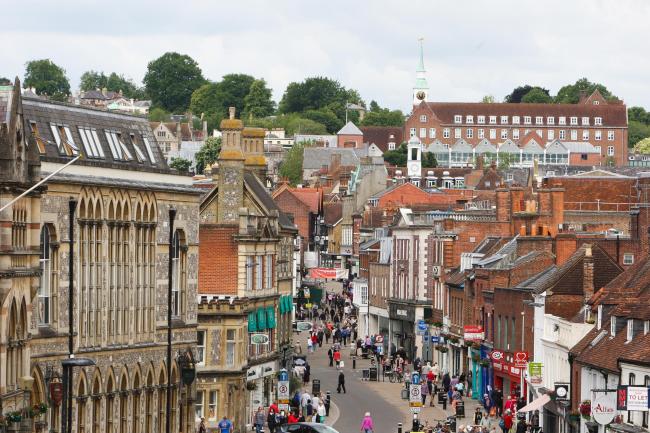
Winchester high street
Convenience relates also to the “click online” vs. “battling the town centre” issue. You might argue that clothes shopping suits a physical experience, yet the stats show otherwise. Boohoo, Missguided and others have stolen a march on high street retailers such as River Island and Topshop (who, though present online, pay massive rents in city locations).
You can’t ignore the fact that boarding a sweaty, crowded bus, or grinding through town traffic in search of a parking space (and then paying for the pleasure), is unpleasant. Likewise, a lot of people are unpleasant. I always laugh inside when politicans say “we stand together” following an atrocity. It’s only in a meta sort of way that we do. We cling to the idea without even vaguely practising it. In reality, everyone hates everyone else. Your fellow human would gladly barge you so as to squeeze on to a commuter train. And they’d let a shop door close on you without a thought. And you’d be damn lucky if they thanked you for when you hold a door open for their obese body to waddle through. Hundreds and hundreds of people just like that await you at the end of every miserable journey to a town centre. And you actually pay £4 to NCP to interact with them.
What follows is the essence of my manifesto. If we can do the following five things, there might be hope still for the preservation of our high streets.
1) Make me want to go to the high street
Parking is a perpetual misery. It usually happens at multi-storey car parks in the life-sucking, processional style of a funeral cortege
I mentioned parking a moment ago. Sometimes you do just need a car – such as when buying umpteen Christmas presents for little relatives (side note: Amazon and co. will bring all of the goods to you, saving the heavy lifting. Can that be competed with?). Parking is a perpetual misery. It usually happens at multi-storey car parks in the life-sucking, processional style of a funeral cortege.
Amazingly, we pay the owners of those car parks to subject us to that experience. Alternatively, there is “cheeky parking” – you know, that handful of spaces that is actually on the high street and that you can score before 9am, maybe (if you can afford the pay and display fees without a bank loan). In any event, there’s the “no return” rule where a parking warden is baited to ticket your vehicle just as you’re into your shopping stride.
My suggestion is that we do two things on this front. As to the first: establish several on-street bays with the capacity for 15 or so cars, conferring one free hour of parking. This will take care of the non-wallowing shoppers. Yes, some folk make a day out of a Saturday at the shops and punctuate their trip with coffee, lunch and so on. In truth, I think that demographic is ageing and is unlikely to be replaced. For the rest of us, we mainly need to get a certain something or set of things from a target in our sights. If someone beseeched me: come along to (say) Bromley town centre, stick your car fifty metres from the shop you need and that’ll be free for an hour, I would much more readily take on the excursion. I’m confident of not being alone in that view.
The parking theory couldn’t logically apply to, say, Oxford Street in London, which is set to be pedestrianised anyway. Most revellers travel in by public transport. For dealing with the misery of retail centres such as Oxford Circus, see my fifth section.
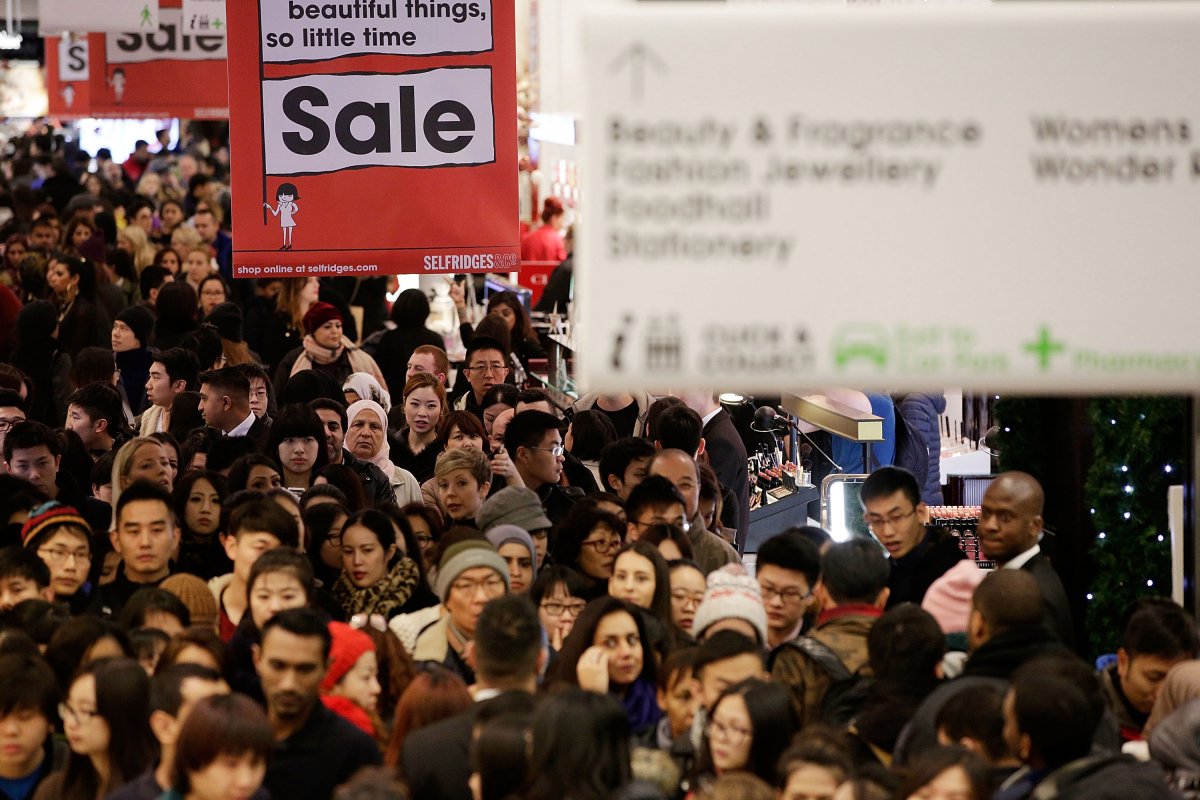
Crowds descend on Selfridges
My second pitch is to recreate variety. This is because many, like me, loathe the homogeny within our high streets driven by the big corporates. Most town centres are focussed around betting shops, McDonald’s branches and chain coffee shops. Hell, some high streets nowadays are only that, perhaps with the odd estate agent and charity shop! You’d struggle to tell Northampton and Maidstone apart. And it’s largely because the big players can afford the rents and rates. The same is true of clothes shops that repeat their stock across branches. Bad luck will then dictate that, if you find an item you want, the shop doesn’t have your size anyway. And you had to go to aaallll that trouble to find out. Aside: if you attended a wedding or christening in the 1990s or early 2000s, you might have encountered that thing where two guests turn up in the same dress – having both raided the Harrogate branch of Monsoon or Coast earlier that month. Have you noticed that that rarely happens now? The internet has created endless possibilities and broken the real-life homogeny I referred to. It’s no wonder that online-only brands are doing incredibly well. The online world confers almost boundless choice, with the option of seeing what is available in your size. And, if it doesn’t fit, you use a handy returns bag and send it away.
You will see in section 3 my recommendation on rates changes to attract independent businesses to town centres. By combining ease of access with a more interesting proposition once accessed, potential shoppers might leave their lounges for the benefits that only real-life shopping can confer.
2) Implore businesses to create good employees
What irks the average punter is the attitude of the person they’re confronted with once they have suffered the queue
If you might be lucky enough to find a cool item, duly in your size, in a town centre clothes shop, your next challenges are the queue and the person at the conclusion of it. Queues are what they are – mainly, another downside when real life is compared with online shopping. What irks the average punter is the attitude of the person they’re confronted with once they have suffered the queue and set about the transaction. Of course, a great many people in tertiary functions, to include the retail and hospitality sectors, embrace their job and do it with gusto.
However, a vast amount of low-wage employees, gritting their teeth through slow, dull days in retail shops (particularly the chains), regularly choose to place a shitty cherry on the shitty cake that you are already eating. From the indifferent to the rude, my own experience is that the average till-server is about as keen to serve you as their employer is to pay them a proper wage (i.e. not very).
Attitudes to the death of customer service on the high street are a bit Brexit-y. Older folk will generally avow that they grafted and smiled their way through their every working day, even though they got a shilling a week and a lump of coal, only to become self-made men and women. Younger people, especially those subscribed to centre and centre-left political ideologies, see moody, unenthused shop workers as a product of years of businesses under-paying employees and stripping back their entitlements.
The likely truth is both sides have a point. That said, the metaphorical thumb seems to be pressed down on shop workers more so now than ever due to poor rights, low wages, the rising use of zero-hour contracts and a total lack of access to asset acquisition. Indeed, at a chain such as JD Sports, the CEO’s income is over £2m annually while those on the shop floor earn around £9 per hour. There has been a growing disparity between those at the very top and those at the bottom in almost every large employer on the high street. That can only be the manifestation of corporate greed, surely? It is shortsighted though, as, without a retail revolution, within ten years there will be no high streets on which to peddle anything other than gambling and expensive coffee.
How we bring employers to the table in terms of shifting the balance is the real challenge. Few businesses do something cuddly unless they are forced. Our greatest hope is in persuading them that the future success of their organisations turns on putting in the various building blocks necessary to breathe life into the high street (and thereby generate non-online sales). One building block is staff incentives and it seems to me that senior managers, with their eyes on their own sturdy incomes, overlook the nexus between service and repeat custom. Only the foolish and the desperate will give you their custom once they feel mistreated.
3) Cut business rates for independents
It cannot be right, or so it appears to me, that an outfit like Starbucks pays the same or similar business rates on a high street as “Bill the local butcher”. We have all but lost our independent butchers, grocers, cafes and artisanal stores. And again we are looking at the homogenisation of the high street, to the great detriment of the consumer.
There should be a business rates discount of at least 25% for any truly independent business. There should be a further 10% discount available for independent businesses who bring especially desirable goods or services to a town centre scene, perhaps pursuant to a Council-generated list. Accordingly, a bakery or art gallery would have preferential treatment over (say) an off licence, the latter being a business that might well be popular but, arguably, of limited benefit to the aim of adding charm.
4) Give me calm and impress me
I look in this section at food retail and hospitality. You’ll have seen the setbacks experienced by Byron and Prezzo (both in CVAs with their creditors), as well as closures mentioned earlier in this piece. The exponential growth in food delivery options alongside the hassles attributable to venturing out have surely mimicked the Amazon phenomenon. More, I think the working and middle classes (which in my view is just one big working class on varying levels of income) are heavily feeling the pinch.
Delivered food has really come on, while a large chunk of mid-tier restaurants’ target market is corseted by the priority of other expenditure
A misery-inducing combination of austerity, stagnant incomes, mortgage costs and the rising price of living make mid-tier eating out either unattractive or impossible. I deliberately label it the mid-tier – which Byron, Prezzo and Jamie’s Italian are all certainly part of – because it makes total sense that this is the suffering section of the market. Consider: is McDonald’s likely to fail? I doubt it. Likewise, glittery restaurants in Mayfair and the City are like revolving doors for the well heeled, for tourists and even for those celebrating an occasion. The Ivy, for example, is a restaurant group in a state of expansion rather than contraction. Really, the loss has been felt where people used to “pop out” to eat, often without a booking, as a small treat or to avoid cooking. Can restaurants like Prezzo bounce back? It seems increasingly unlikely. Delivered food has really come on, while a large chunk of mid-tier restaurants’ target market is corseted by the priority of other expenditure.
If people on all income levels will still go out for an occasion, is the answer to make the experience (gulp) “special”? We know that almost every branch of Byron looks the same. Likewise Pizza Express. We also know that there is a certain crowdedness and lack of salubriousness associated with mid-tier restaurants. In the same vein as points I made earlier about human interaction, do people (who already are thinking hard about whether to spend the money) really want to sit in an uninteresting dining room and mosh with the masses? – children watching iPads; Dan from IT who’s had four too many Peronis and is now being very loud. Why would you put yourself through that, and traipse there, when Deliveroo will bring Five Guys burgers to the comfort of your own home?
I’m not saying it’ll be easy. But: freeing themselves from the corporate greed to which they have become accustomed, chain restaurants need to juj up their interiors and spread out the covers so as to entice punters who are a micro-decision away from simply staying indoors. My only codicil is that spending should be borne of good decisions and not bad efficiencies, as staff wages and general employment conditions are already woefully inadequate in the hospitality sector.
5) Can we just stop being selfish now?
How the advent of the smartphone has changed us all. Me, me, me. Two generations addicted to Instagram, Snapchat, selfies and the curation of social media presences founded on a quest for adoration.

A fact of modern life
You might be reading this article on your smartphone, and I’m thankful for that. Phones and associated technologies have enhanced our lives massively. The problem they have doubtlessly generated at the same time is an unhealthy disregard for other people. With that comes the beginning of societal disintegration. Heads barely rise from phone screens as people wander in a trance. Calls are made from everywhere and anywhere, whether or not others have to suffer the noise. Tinny tunes blare out in public places. Teens pout for endless selfies, soaking up public space in ignorance of those with whom they share it. The race to be seen, adored, followed and famed dominates the lives of a huge proportion of young adults. Even music stars have commented that they aren’t asked for autographs any more; instead a selfie is thrust upon them for social gratification via the impending upload – the vital evidence that the photo-taker’s life is more awesome than that of the onlooker.
What we have done to ourselves with smartphones and social media will one day be looked upon with puzzlement by historians. Trolling will generate whole books on how we exchanged hate anonymously. They will ponder how we arrived here, with vacuous reality TV rolling on all channels and daft gadgets in our living rooms recording conversations in plain view.
My final plea in this manifesto is that we, the conscious grown-ups, turn away from our virtual lives, help to educate teens and, maybe, raise new generations of social creatures who feast on freedom from the technology takeover
Until we unbridle ourselves from the new philistinism that is draped over western society – affecting the 16 to 25 age group particularly – the quality of our real-life interaction will continue to decline. We are losing quaint but essential life moments, like bumping into a stranger who muses at the same folly or exchanging a knowing smile with a fellow parent. We don’t hold doors; we don’t say thank you; we don’t care. Is it any wonder that a person living more consciously than a smartphone addict can’t bear to be around “people”, particularly swathes of them on a crowded Saturday in a city centre? And any wonder that that those living on their smartphones or in social media land feel no need to hone the skills necessary to understand what it is to interact with other humans?
The average high street bears a collection of people from every life position imaginable, toiling similarly. My final plea in this manifesto is that we, the conscious grown-ups, turn away from our gadgets, help to educate teens and, maybe, raise new generations of social creatures who feast on freedom from the technology takeover.
by C Ley

